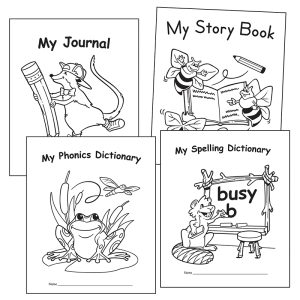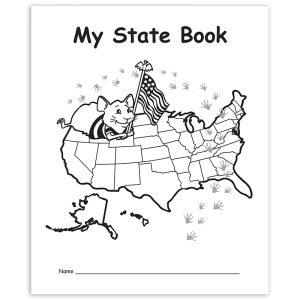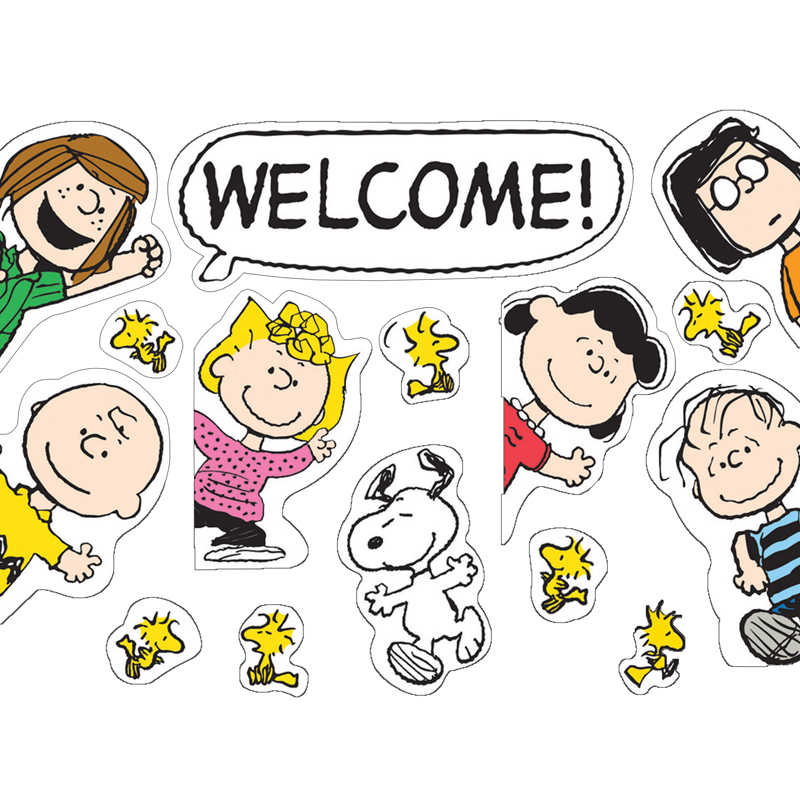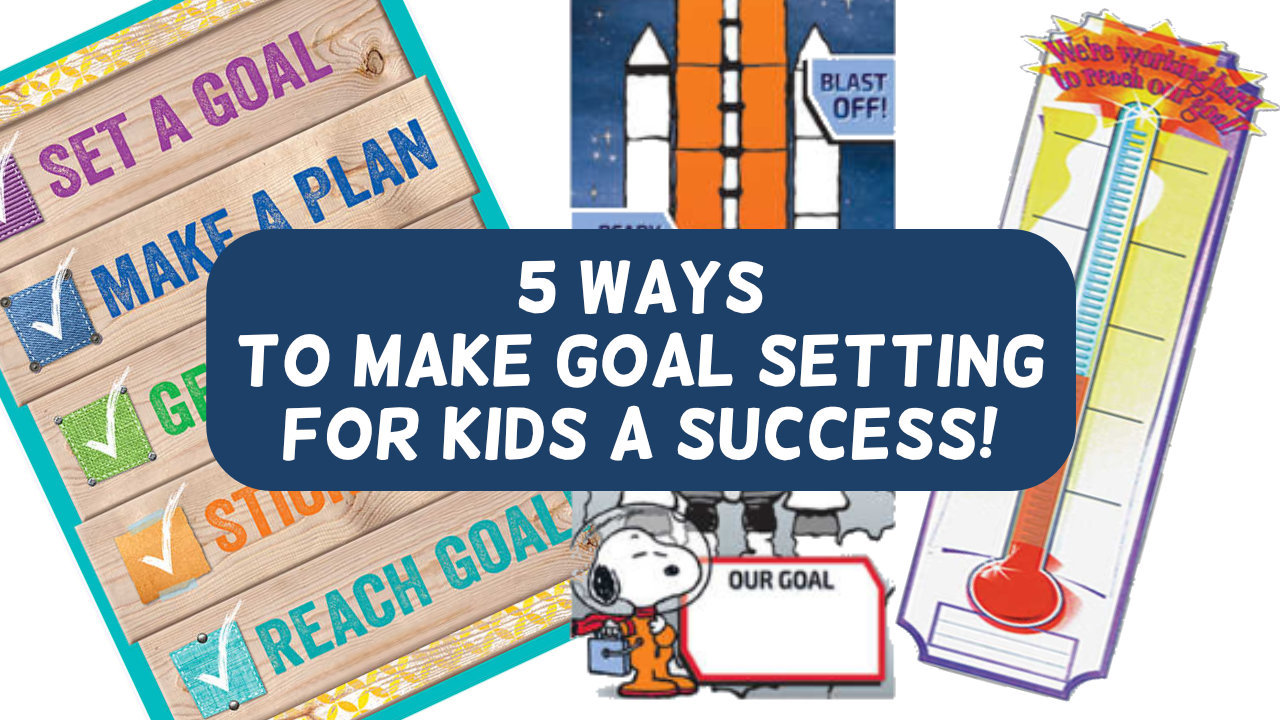Ancient Civilizations Introduction
The plays included in this book are interactive learning aids designed to make history and cultural study come alive for your students. You’ll quickly find that dramatizing a lesson stimulates your students to do more research and get more mentally involved with the subject, enhancing your efforts to impart basic knowledge to students, and inspiring them to discover more about the subject on their own.
It is a teacher’s challenge to create a collaborative, personalized learning environment to address students’ varying “learning intelligences.” Drama, with its inherent capacity to tap into and synthesize a wide range of skills and expressive modes, is a highly effective way of achieving this goal. You don’t need to be a trained theatre specialist to make use of these plays. You only have to know how to read! And, of course, you’ll find the ability to channel your students’ exuberance and enthusiasm into orderly collaborative expression very handy—but you have that skill as a teacher, anyway.
WORKSHEET & Sample PDF Activity
Sample PDF Activity
Consider these plays as foundations and stepping-off points for further research and learning by your students. Although each play script is self-contained and based on actual curriculum material, the format allows for additional information you might want to insert. For instance, Building the Great Pyramid can supplement a lesson plan in basic math and geometry. The Code of Hammurabi can generate a post-play discussion about modern ethics and individual civic responsibility. A Child’s Day in Caesar’s Rome is an excellent introduction to how people lived in a diverse, multi-cultural society. The Story of the Trojan Horse offers intriguing insights into archeology, literature, poetry, and theatre. Additionally, the activities of making sets and costumes allows you to combine with studies in other disciplines: science, language, dance, music, geography, and social studies.
Decorate the set with architecture, plants, and art objects specific to that region. If you are a music teacher and want to add songs and music to any of the plays, go ahead and make it a class project by organizing a chorus or having students select appropriate recordings from the host culture to play before and after the performance. These plays are an excellent vehicle for getting other members of the school and community involved in your project. Maybe there are ethnic dance troupes or performers of ethnic music in your area; ask them to give a special concert or lecture when you present the play. Utilize the talents of local school or youth orchestra members to play incidental music. Get the school art club to paint scrims and backdrops. See if a senior citizens’ group might volunteer time to sew costumes.
Realizing that many performing groups may have limited technical and space resources, the sets, costumes, and props listed here are minimal. However, if you do have the ability to build an Egyptian pyramid or a scale model Trojan Horse—go for it! Adding more music and dance and visual arts and crafts into the production involves more students and makes your play a genuinely multimedia event. Similarly, only basic stage and lighting directions have been supplied. Blocking is really the province of the director; once you get the play up and moving, feel free to suit cast and action to the experience level of the actors. When figuring out how to stage these plays, follow the venerable UYI Method—Use Your Imagination.
The use of the plays in this book is a great way for students to explore ancient history and see the world through the eyes of the people who lived at the dawn of human civilization. And you, the teacher, can now proudly add “Director/Producer” to your long list of ad hoc/pro bono classroom job titles!
Break a leg!
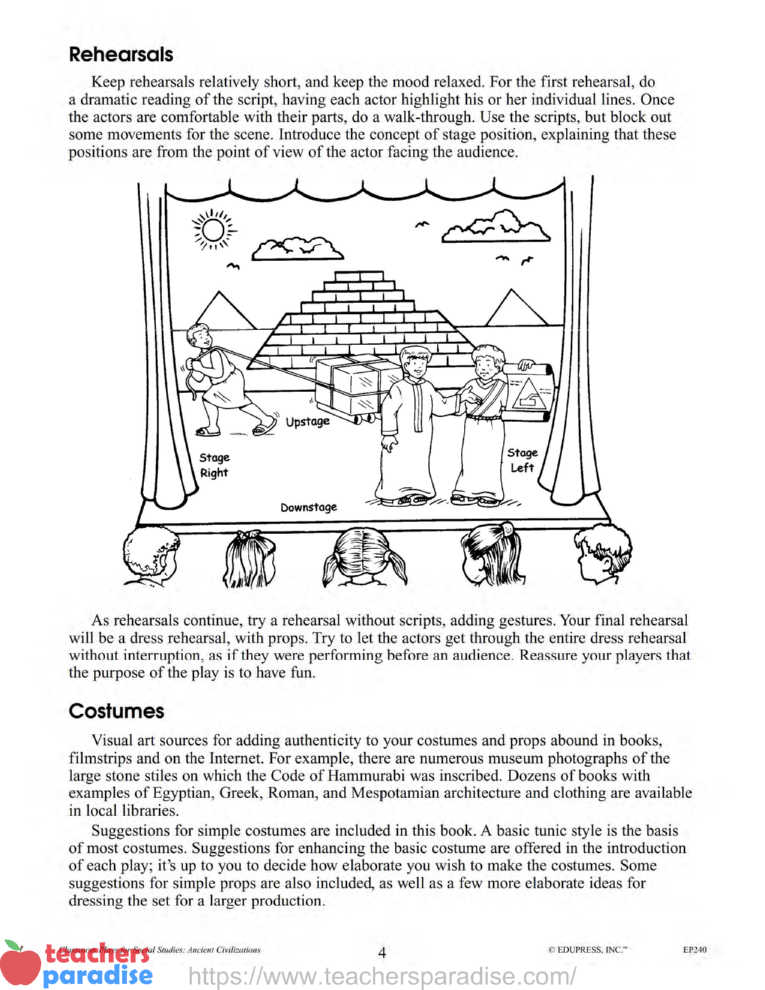
Getting Ready
What kind of production shall we do?
The plays in this book can be presented in a number of different ways, depending on the interests and skill level of your class.
• Classroom Theater—Some students are more comfortable appearing in classroom performances before a small group of their classmates or another class. This method requires minimal set decoration, although costumes do add interest and fun.
• Dramatic Reading—The performers give a dramatic reading of the script, complete with gestures and movement. This approach requires a minimum of rehearsal time and simplifies preparation, as there is no need for sets or costumes.
• Puppet Theater—The use of puppets can be entertaining and comfortable for students too shy to appear in front of a group.
• Stage Performance—Where a stage or auditorium is available, this type of performance can be exciting and fun for a student group to produce.
Assigning Parts
The plays have been written with large casts to get as many students involved as possible. Feel free to add or subtract “extra” characters as needed to suit your classroom population. Except for a few lead roles where a sense of audience expectation more or less demands that the gender of the actor and character match, feel free to mix boys and girls in supporting roles as your student demographic dictates.
Not all participants in a play must be actors. There are plenty of “behind-the-scenes” jobs for everyone.
Announcer – This person introduces the play and players to the audience.
Understudies – These people learn and rehearse one or more parts, being prepared to perform if another player is absent.
Stage Manager – In a larger production, this person raises the curtain and is in charge of sound effects.
Property Master – This person takes care of props and costumes.
Playbill Writer and Illustrator – This person creates a program to distribute to the audience.
Setting the Stage
Even a classic stage presentation of your play can offer several variations. You can keep it very simple by using an open corner of the classroom as a stage, or having the students perform in the center of the classroom with the audience seated around them. If you want to give the impression of a true stage, you can hang up a sheet to act as a curtain. It might be fun for the class to paint a background scene, or “scrim,” on a sheet or large pieces of cardboard. Consider using a sheltered outdoor area for your performance.
The First Read-Through
Pass out copies of the script you have chosen, and read aloud as the students read along silently. Explain how tone can change the meaning of the lines they are reading, and follow with an example. Have students practice reading lines with emphasis or meaning.
Rehearsals
Keep rehearsals relatively short, and keep the mood relaxed. For the first rehearsal, do a dramatic reading of the script, having each actor highlight his or her individual lines. Once the actors are comfortable with their parts, do a walk-through. Use the scripts, but block out some movements for the scene. Introduce the concept of stage position, explaining that these positions are from the point of view of the actor facing the audience.
As rehearsals continue, try a rehearsal without scripts, adding gestures. Your final rehearsal will be a dress rehearsal, with props. Try to let the actors get through the entire dress rehearsal without interruption, as if they were performing before an audience. Reassure your players that the purpose of the play is to have fun.
Costumes
Visual art sources for adding authenticity to your costumes and props abound in books, filmstrips and on the Internet. For example, there are numerous museum photographs of the large stone stiles on which the Code of Hammurabi was inscribed. Dozens of books with examples of Egyptian, Greek, Roman, and Mespotamian architecture and clothing are available in local libraries.
Suggestions for simple costumes are included in this book. A basic tunic style is the basis of most costumes. Suggestions for enhancing the basic costume are offered in the introduction of each play; it’s up to you to decide how elaborate you wish to make the costumes. Some suggestions for simple props are also included, as well as a few more elaborate ideas for dressing the set for a larger production.
Table of Contents Classroom Plays for Social Studies: Ancient Civilizations for Grades 3-6 by EDUPRESS, INC. – EP-240 – ISBN 1-56472-240-6
Introduction – 2
Getting Ready – 3
Costume Basics – 5
Egypt: Building the Great Pyramid
Introductory Material – 7
Staging Helps – 9
Building the Great Pyramid – 10
Babylonia: The Code of Hammurabi
Introductory Material – 16
Staging Helps – 18
The Code of Hammurabi – 19
Greece: The Story of the Trojan Horse
Introductory Material – 25
Staging Helps – 27
The Story of the Trojan Horse – 28
Rome: A Child’s Day in Caesar’s Rome
Introductory Material – 36
Staging Helps – 38
A Child’s Day in Caesar’s Rome – 39

